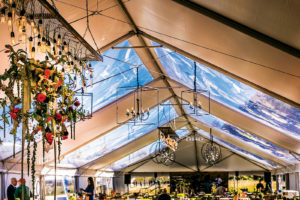
For most tent rental companies, an inventory that doesn’t include frame tents is unthinkable. Frame tent systems are the workhorses of the industry, favored by customers for all kinds of events.
Frame tents play an indispensable role in almost every tent rental company’s inventory. As common as they are, these tents are anything but unassuming or lacking in innovation. And although they’ve been around for decades, their appeal hasn’t waned, but instead has only gained momentum.
What makes these tents so popular? Frame tents require no center pole, affording unobstructed interior space, which makes the placement of furniture, flooring and so on much easier, says Cassandra Roessner of Celina Tent Inc. The Celina, Ohio-based manufacturer provides numerous off-the-shelf frame tents that can be customized through colored vinyl or custom printing/graphics.
“Also, unlike pole tents, frame tents don’t rely on the anchoring system to remain erect, enabling you to assemble the tent and install anchoring separately,” Roessner says.
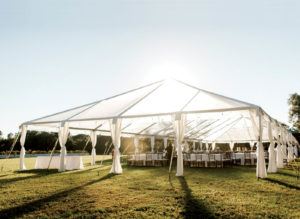
tent from Economy Tent International is
the perfect setting for a wedding at Bramble Tree Estate in Lake County, Fla.Coordinator: Weddings in the City. Chairs, tables and dance floor: Orlando Wedding & Party Rentals.
Photo by Rebecca Read Photography.
And they may not require as many anchors as do pole tents, says Scott Sutherland, president and owner of Olympic Tent, a Tacoma, Wash.-based tent manufacturer.
“They can be faster to install and strike, and the span between the perimeter poles can be greater with a frame tent than a pole tent,” Sutherland says. “Our frame tents typically have a much higher wind- and snow-load capacity than pole tents, and they can be configured in a variety of shapes like hip end, gable end, hex end or high peak.”
David Spata, president of Big Tent Events, a party and event rental company based in Carol Stream, Ill., says that frame rather than pole tents are the best option for staking on hard surfaces when storms are forecasted, not only because of their typically higher wind-load ratings but also because it’s possible to stake closer to the legs, making the tent less vulnerable to high winds.
Spata launched his business six years ago with frame tents to attract customers hosting company picnics and festivals. Today, frame tents account for 80 percent of his tent inventory. Along with faster and easier setup, the ability to install on any surface and the unobstructed interior space, Spata enjoys these tents’ lighting flexibilities.
“Because of the amount of pipes used for the roof framework, there are so many ways to install lighting,” he says. “With LED and Edison lights becoming so available in different options, tent lighting continues to get more creative, adding a wow factor to the tent.”
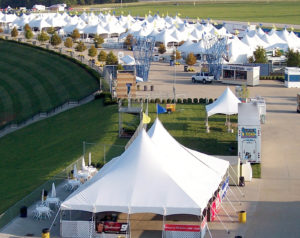
A rental must-have
This versatility makes frame tents popular with rental businesses and their customers. Zach Stuart, co-owner of Stuart’s Tents N Events, says his clientele often prefers frame over pole tents. Located in Burlington, N.C., Stuart’s provides rentals for weddings, corporate events, social gatherings, festivals and disaster relief. Frame tents comprise 75 percent of its tent inventory.
Like Spata, Stuart appreciates the ability to locate the tents in areas where pole tents can’t go. Another plus is their ballasting options. For example, depending on the type of event and customer desires, they’ve deployed ballasts with vinyl covers to complement the decor.
“We’ve also been able to create base camps by installing Strata® floor first, then erecting the frame tent on top of the flooring using real walls, glass French door sets, etc.,” he says. “Also, clients can decorate the interior of the tents for weddings to the point where guests may not even realize they’re under a tent.”
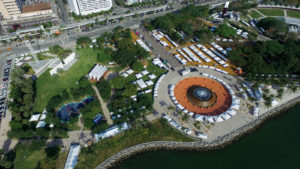
Roessner says Celina’s sales of its 20-by-20-foot Classic Series frame tents have nearly doubled in the past four years. This tent is frequently chosen for graduations and small backyard parties, she says.
“It’s also a popular size for custom printing where a sturdier tent is needed compared to a pop-up,” she adds.
Sales of Celina’s Gable Frame tent are also increasing. This tent’s design helps eliminate water runoff over the entrance, which is useful when a tent is installed as an extension to a building or for covering a walkway or connecting separate structures.
The All Peak tents from Kansas City, Kan.-based manufacturer All Seasons Tent Sales are favored for weddings and corporate-type events, while the company’s Traditional frame tents show up more at backyard parties, graduation parties and street festivals, says Gary Feuerborn, vice president. Demand for the Traditional tents is especially strong.
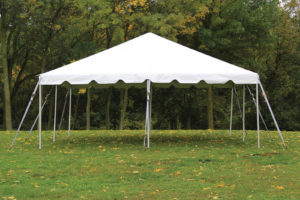
“These are easy tents and a good start-up for rental businesses because they’re generally less expensive for people to rent compared to the Peak tents—although the difference is moderate,” he says. “However, with Peak tents, rental companies are able to go after a higher-priced market.”
This year, All Seasons introduced the All Sail, a sailcloth-style frame tent. “This is what customers are asking for,” Feuerborn says. “They want something new and trending. Most rental companies are purchasing [sailcloth-style] tents. However, a rental company just starting up would want to build up their business before adding the All Sail.”
Know before purchasing
Stricter building codes are fueling demand for frame tents, Sutherland says. Frame tents are more likely than pole tents to have engineering documentation—although some pole tents have proper engineering too, he adds. Consequently, it’s important that rental companies ask for a copy of the tent engineering and inspect it closely. Knowing what codes apply to them is also essential.
“Permit specialists have become more careful about the content of engineering,” Sutherland says. “Not all engineering is equal, and they will frequently reject engineering that doesn’t list the most recent code update or engineering [lacking] the wind-load capacity required by their code.”
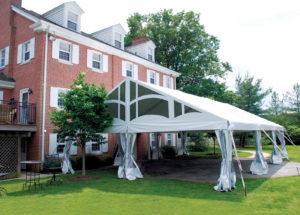
What else to consider? Know your target market, says Sarah Lapping, director of sales and marketing for tent manufacturer Economy Tent International, Miami, Fla.
“Are you looking to do festivals or events and weddings? Will the tent grow with your customers’ demands? Suppliers should ask where you see your business in two, five, ten years from now,” she says. “This will dictate the style and capabilities of the product that will best fit your needs.”
Companies just starting out may want to consider a 20-foot-wide system, she says. However, if down the road they envision expanding into tents that are 40- or 50-feet wide, a more versatile system may be the better investment.
“Suppliers should also know your installation capabilities and if you have the equipment and crew necessary for safe installation,” she says.
Mark Obringer, customer account manager for Celina, says the style of the tent frame tubing and fittings used to create the frame is an important consideration. Many tent manufacturers including Celina utilize West Coast style frames and fittings, affording rental companies the possibility of easily replacing hardware in a pinch, he says.
“Additionally, a new rental company should ask about the tent connection styles for the rain flaps on sectional tents,” he says. “With two main attachment systems—rope with rap clips or hook-and-loop fasteners—ordering or reordering tents with incompatible attachment styles would cause massive problems.”
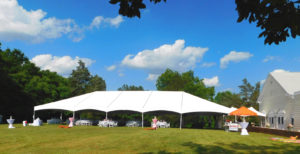
Stuart suggests reaching out to nearby rental companies to determine what frame tent they carry in case it’s ever necessary to sub-rent from them (or them from you). And know the environment and weather conditions the tents will most often face, he says.
“We recommend going to one of the many trade shows featuring the different manufacturers and their tent styles to see what you like, along with getting information on how they go together, durability and wind ratings,” he says.
Rental companies should ask suppliers how many people it takes to install the tent and how much time the install takes with that given number of people, says Feuerborn. Spata deems these questions critical as well.
“Labor costs are your biggest challenge as a tent owner,” he says. “Your labor costs will determine how profitable you’ll be at the end of the year. So, having tents that are quick to put up and take down is important.”
Pamela Mills-Senn is a Long Beach, Calif.-based freelance writer.
 TEXTILES.ORG
TEXTILES.ORG


